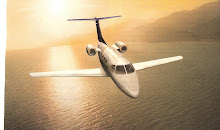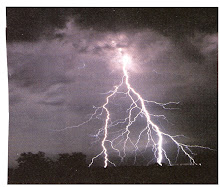Hi Readers: In flying, our radio and radar communications are all-important - a necessity from the beginning - to get from one point to another - from departure to arrival safely. This includes our use of radar navigation en route - some a convenience, others a necessity.
These radio and radar communications originate from a broad spectrum of frequencies (electromagnetic waves) broadcast and received by Transmitters and Receivers from a Low frequency (100 Khz) through MF, HF, VHF, UHF, SHF, and to EHF (Extremely High Frequency at 100 Ghz). If you've forgotten, Kilo is one thousand, Mega is one million, Gigga is one billion - and, of course, "Hertz" is the ICAO designation for cycles/second. These frequencies in the U.S. are assigned by the Federal Communication Commission (FCC) in collaboration with the International Civil Aviation Organization (ICAO).
In the very beginning, whether a local or X-C flight, we must necessarily contact a Ground Control, a Tower, or FSS to get departure instructions, and by regulation we must use the assigned frequencies. Normally, Towers and FSS's are assigned VHF frequencies (118+ Mhz). These frequencies can be found for any airport designated by the FAA. Ground Control frequencies are also in the VHF range, 121.66 to 121.9 Mhz.
En Route, we should expect to communicate with VORs and VORTACs (108-118 Mhz); or use GPS on 1215-1240 Mhz; or ARTC as assigned, perhaps NDB on 190-535 Khz; or LORAN C at 100 Khz; Mode S radar at 1030, 1090 Mhz; TCAS at 9660-1215 Mhz; and ARSR at 1215-1400 Mhz.
On Descent and Approach we'll use ILS Localizer on 108-112 Mhs (VHF) and Glideslope on 328.6 - 335.4 (UHF). And then back to the Tower and Ground Control frequencies. All of these communication frequencies have to be known and used, as needed, by the pilot. The emergency frequency is still 121.5 Mhz.
UNICOM (No Tower or FSS) uses CTAF (Common Traffic Advisory Frequencies) of 122.7-123.0 Mhz. Other communications frequencies designated by the FCC are air-to-air and private airports on 122.750 and 122.850 Mhz; air-to-air GA Helicopter communications on 123.025 Mhz; and Aviation Instruction, Glider, and Hot-Air Balloon operations in the 123.300 Mhz range.
Other Airborne frequency assignmentss are Microwave Landing Systems (MLS) used by DOT, DOD, and NASA are 5000-5150 Mhz, with DME at 960-1215 Mhz; Airborne Weather Navigation Radar at 9300-9500 Mhz; Airborne Radar Altimeter at 4200-4400 Mhz; and Precision Approach Radar (PAR) used by the Military at 9000-9200 Mhz.
Large Ship Radar at 2900-3100 Mhz and above; Amateur Radio (HAM) at 1800 Khz to 250 Ghz, and Space Communications at 2290-2300 Mhz are of interest to many users.
Surface frequencies of interest, also, are AM Radio 535-1700 Khz; FM Radio 88-108 Mhz; Short Wave Radio 5.9-26.1 Mhz; CB Radio 29.96-27.41 Mhz; Television 54-88 Mhz and 174-220 Mhz, depending on the Channel; Cordless Telephones 40 to 50 Mhz; and Cell Phones at 824-849 Mhz.
As the need for air travel and the increase of airplanes in the airspace appear, the lack of available radio frequencies may become a stumbling block in operations as early as 2005. The demand for assigned frequencies is getting beyond the supply. A log-term digital plan seems to be the best option for the future.
Thanks for listening. R.S.
Showing posts with label airspace. Show all posts
Showing posts with label airspace. Show all posts
Friday, December 28, 2007
Radio and Radar Communications
Labels:
air travel,
airspace,
communications,
CTAF,
FCC,
FSS,
GPS,
ICAO,
localizer,
Radar,
Radio,
tower operations,
UNICOM
Wednesday, July 18, 2007
Regional Airlines Hiring Pilots
Hi Readers:
While I calculate and compare a few travel figures for the next blog, let me remind the Commercial and Air Transport pilots that regional airlines are hiring pilots and the future looks good. As reported by Airline Transport Professionals (airline pilot training and pilot career development) regional airlines COMAIR, Pinnacle, American Eagle, Trans State Airlines, Delta, ExpressJet Airlines, SkyWest Airlines, Mesaba Airlines, Skyway Airlines, PSA Airlines, and others are hiring pilots right now.
There are also several Airline Pilot Job Fairs scheduled where you can meet airline recruiters (800 - Jet Jobs). A good source of airline hiring information on your computer is www.pilotjobs.com. In fact, ATP has a database that is fed by the other airlines listing, primarily, their certificate, time, PIC, turboprop and jet time, and education and age requirements. The fact that they are listing minimum, competitive, and preferred requirements is a good sign that they are willing to talk to you, and listen. Good luck!
Meanwhile, Congress is still procrastinating on the GA fees - and several have reversed their stand on the matter. And the airlines are blaming GA for some of their troubles and GA is blaming the airlines for similar reasons.
Air travel has become a synergetic enterprise, closely knitted in structure and tightly wound in its total operation. The demand is great, the supply is problematical. Travelers need pilots and reliable airplanes, direct flights with minimum delays, and better connections to their final destinations. Airlines, such as JetBlue come close to travelers satisfaction.
Before I get off my soapbox, since when is our airspace (like the air we breathe) for sale? And (for the airlines) when did you decide that your passengers can go without food for those long hours of flying and delays? RS.
While I calculate and compare a few travel figures for the next blog, let me remind the Commercial and Air Transport pilots that regional airlines are hiring pilots and the future looks good. As reported by Airline Transport Professionals (airline pilot training and pilot career development) regional airlines COMAIR, Pinnacle, American Eagle, Trans State Airlines, Delta, ExpressJet Airlines, SkyWest Airlines, Mesaba Airlines, Skyway Airlines, PSA Airlines, and others are hiring pilots right now.
There are also several Airline Pilot Job Fairs scheduled where you can meet airline recruiters (800 - Jet Jobs). A good source of airline hiring information on your computer is www.pilotjobs.com. In fact, ATP has a database that is fed by the other airlines listing, primarily, their certificate, time, PIC, turboprop and jet time, and education and age requirements. The fact that they are listing minimum, competitive, and preferred requirements is a good sign that they are willing to talk to you, and listen. Good luck!
Meanwhile, Congress is still procrastinating on the GA fees - and several have reversed their stand on the matter. And the airlines are blaming GA for some of their troubles and GA is blaming the airlines for similar reasons.
Air travel has become a synergetic enterprise, closely knitted in structure and tightly wound in its total operation. The demand is great, the supply is problematical. Travelers need pilots and reliable airplanes, direct flights with minimum delays, and better connections to their final destinations. Airlines, such as JetBlue come close to travelers satisfaction.
Before I get off my soapbox, since when is our airspace (like the air we breathe) for sale? And (for the airlines) when did you decide that your passengers can go without food for those long hours of flying and delays? RS.
Labels:
airlines,
airspace,
Congress,
hiring,
jobs,
passengers,
pilot certificates,
regional
Subscribe to:
Posts (Atom)










